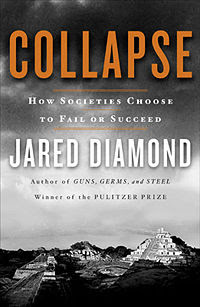 I don't recall much fresh garlic being used in our house when I was growing up; I think it was limited to a clove here and there and maybe almost exclusively garlic salt in a few recipes. Most of my early cooking used garlic salt, until I realized that I was adding a lot of salt to get that garlic flavor. I started to use fresh garlic and then a lot of it. I was struck with Alice's rule early on. You know, Alice from Arlo Guthrie's song "Alice's Restaurant", that started "You can get anything you want at Alice's Restaurant". Actually this song (1965) was mostly about the Vietnam War, but it briefly made Alice Brock a star, and she published a cookbook. Here's what she said:
I don't recall much fresh garlic being used in our house when I was growing up; I think it was limited to a clove here and there and maybe almost exclusively garlic salt in a few recipes. Most of my early cooking used garlic salt, until I realized that I was adding a lot of salt to get that garlic flavor. I started to use fresh garlic and then a lot of it. I was struck with Alice's rule early on. You know, Alice from Arlo Guthrie's song "Alice's Restaurant", that started "You can get anything you want at Alice's Restaurant". Actually this song (1965) was mostly about the Vietnam War, but it briefly made Alice Brock a star, and she published a cookbook. Here's what she said:"Tomatoes and oregano make it Italian; wine and tarragon make it French. Sour cream makes it Russian; lemon and cinnamon make it Greek. Soy sauce makes it Chinese; garlic makes it good."
Did you get that last part? I seem to have, because I use copious amounts of garlic in every dish where it seems reasonable.
Starting around 2007 there were a lot of reports that most of our store-bought garlic was coming from China. This was a comedown for our famous garlic capital, Gilroy, California. Part of it was a disease that devastated the crop, and partly because of cheap labor in China. As one industry source explains, Chinese garlic has been found to be contaminated with arsenic, and its quality is also not as good. But China has often been the only source of fresh garlic readily found in winter. I was dismayed to see a big case of it in the back room of a grocery I patronize especially for their local produce.
I planted my first crop of garlic in the fall of 2007 and harvested it in late July, 2008. Since then I've been storing and using it. Some home truths I have discovered are that yes, there really are substantial differences in quality among varieties; and storage really is an issue. The cloves start to sprout. After dithering about where to store them, they ended up in my pantry closet. The garlic to the left is German Extra Hardy. It doesn't seem to sprout as readily (I pulled the clove shown off precisely because it was sprouting). This is a stiff-neck variety with very large cloves, and not many per bulb or head. The cloves and bulb to the right are New York White, a soft-neck variety that can be braided - but I didn't. Now as January draws to a close, I have almost used up the New York White, skating ahead of the sprouts. I hope that the German Extra Hardy lasts into the next harvest, but I doubt it. We eat a lot of garlic.
In spite of the facts that GEH lasted better and is easier to cook with because of those huge cloves, I'm planting less of it in 2009 in comparison to other varieties. The reason is that the flavor seems to be harsher than the NYW. Yet I'm not ordering NYW at all, because the heads are so small and it sprouts so early. But I'm expanding my planting and have ordered more of two new varieties, Music and Russian Red. It's a little strange - I have now ordered garlic to be planted in October-November of this year (2009) and harvested in 2010. Meanwhile under the snow this last year's plantings are waiting for spring.
I'm looking forward to trying a recipe another blogger listed. It uses a lot of garlic and looks like a good reason to get plenty of green beans planted next year.

